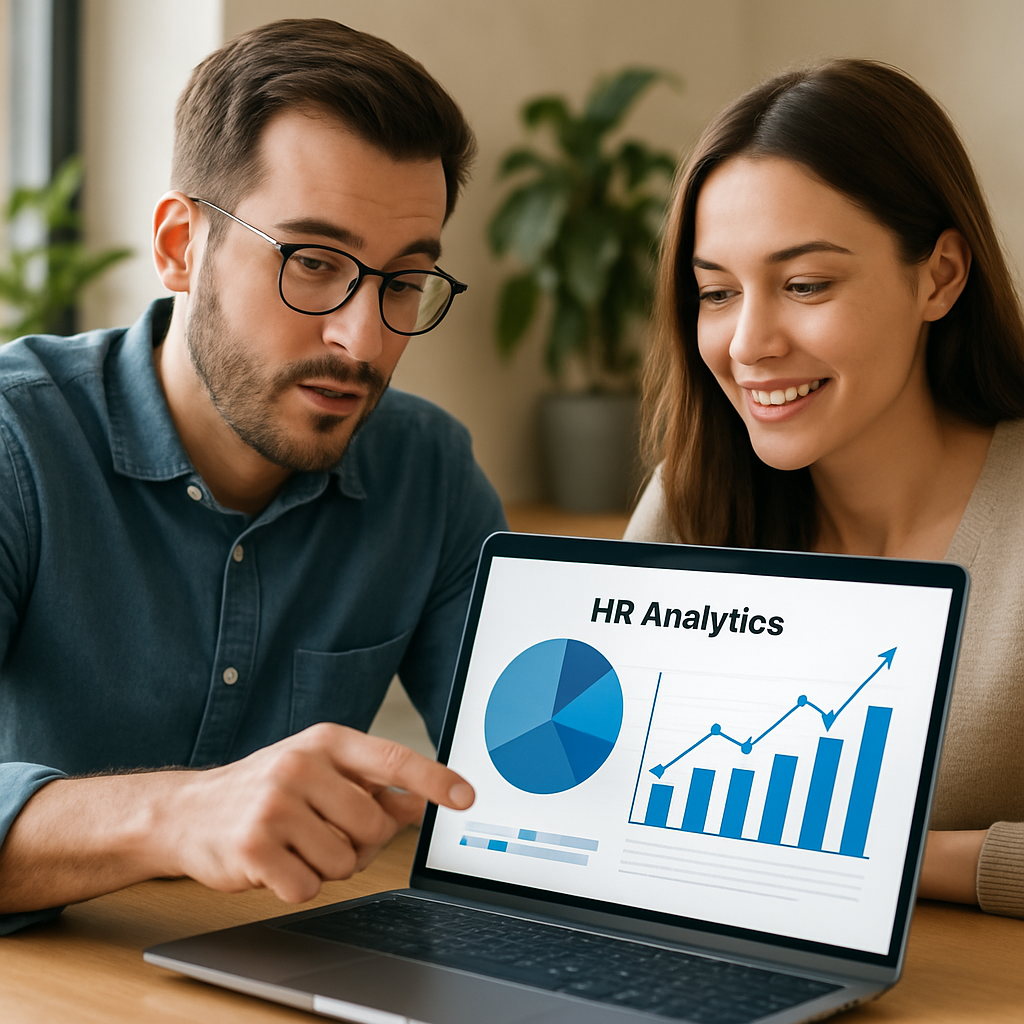Automated HR Analytics Breakthrough
on Junio 19, 2025

Introduction to AI Predictive Analytics in HR
HR tech is evolving traditional human resource management into a dynamic, data-driven function. Organizations now leverage AI to gain deep insights, predict trends, and optimize talent strategies. This article explores trends, methods, best practices, and industry-specific use cases in AI for HR.
Modern HR ecosystems balance technical expertise with a human-centric approach. AI predictive analytics streamlines decision-making and provides actionable insights that drive employee engagement and performance.

Key AI Predictive Analytics Trends Overall
The realm of AI in HR is advancing rapidly. Predictive models are helping companies forecast employee turnover, identify high-potential talent, and tailor development initiatives. Notable trends include:
- Advanced machine learning algorithms evolving with new inputs.
- Real-time data processing for immediate decision-making.
- Behavioral analytics to gauge employee sentiment.
- Enhanced data security for sensitive information.
- Cloud-based platforms providing scalable analytics.
These trends make employee analytics a cornerstone of strategic HR planning, blending data science with human insight for smarter talent management.
Methods for Integrating AI into Existing Analytics Systems
Integrating AI into HR systems is a strategic journey. Traditional systems often have isolated data silos. Effective integration involves:
- Auditing current HR systems to identify data gaps.
- Consolidating data in unified warehouses.
- Implementing robust data governance protocols.
- Adopting scalable cloud solutions for growth.
- Training HR teams to leverage AI-driven insights.
Bridging quantitative metrics with qualitative human engagement, AI integration offers a holistic view of talent management.
Best Practices and Integration Frameworks
Successful AI integration requires a structured approach. Key practices include:
- Defining clear objectives and KPIs for AI integration.
- Ensuring data quality and standardization across systems.
- Conducting pilot projects before full-scale rollouts.
- Utilizing agile project management for adaptive execution.
- Maintaining transparency with employees regarding data usage.
Ongoing monitoring and evaluation help fine-tune strategies, maximizing ROI and reinforcing continuous learning in HR tech implementations.
Industry-Specific Use Cases
Different industries face unique challenges requiring tailored AI solutions. In retail, AI models forecast seasonal turnover and optimize staffing. Manufacturing uses AI to identify skill gaps and design targeted training, reducing costs and turnover. Financial institutions adopt AI for improved talent management and compliance, proactively addressing risks in highly regulated environments.
These examples illustrate the versatility of AI predictive analytics and its universal value in enhancing HR operations.
Future Directions and Emerging Trends
The future of AI in HR includes natural language processing (NLP) and advanced sentiment analysis to improve feedback interpretation. The convergence of AI with augmented reality (AR) and virtual reality (VR) is set to transform employee training and virtual onboarding. Other future directions include:
- Pioneering adaptive learning systems for real-time employee development.
- Expanding analytics to include workforce wellness and mental health.
- Using blockchain technologies to secure employee data.
- Refining AI algorithms to reduce bias in recruitment decisions.
Conclusion and Call to Action
AI predictive analytics in HR represents a paradigm shift. By adopting best practices, integrating cutting-edge tools, and tailoring solutions to industry needs, HR departments can turn data insights into strategic assets. Embrace HR tech innovations today—whether overhauling your existing systems or implementing new predictive models—to drive continuous growth and performance. Contact us now to transform your employee analytics into an enduring competitive advantage.



Leave a comment